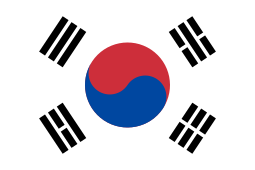Learning Korean

Throughout recent years the 한류 wave, the rapid wildfire-like spread of Korean culture, has taken over the globe. Korean dramas, Korean foods like their special barbecue and the popularity of K-pop in the West has inspired young teens all around to learn a new language in order to gather more understanding.
Many others, however, may have a different reason to learn the Korean language (한글). People may find themselves in the foreign country due to a surprise job transfer.
Alisha Erb experienced this for herself as she adapted to the different country at a young age when her father transferred there for work. She learned to speak and write Korean in first grade. She lived in South Korea until the end of her fifth grade year.
“I went to the beach a lot since I lived close to the beach. I mostly walked to places,” said Alisha Erb as she recounted all the foods and places she travelled through in Korea.
She went on to state that she enjoyed bulgogi (which literally translates to “fire meat”), a Korean dish consisting of thinly sliced marinated pork or beef.
South Korea, a modern country booming with advanced technology and architectural buildings, has been gathering attention recently. They held the 2018 Winter Olympics in PyeongChang and have been in the news with their infamous other half in recent years. The attention they bring to their land catches the eyes of many others. While Korea is highly ethnically homogeneous, a rise in foreigners has occurred throughout these past couple of years. While only 3.4% of their population makes up all the foreigners there, that number continues to grow with 100,000-200,000 new people arriving each year.
“People in Korea are more polite and considerate. They’re more modern, as well. Almost all the buildings there are made out of glass,” recalled Alisha.
According to the Department of Linguistics, the Korean language is believed to be one of the world’s oldest languages and is linked to multiple languages like Tibetan and Japanese. Korea has many dialects – the most commonly used is the Seoul dialect – yet Koreans have no trouble understanding each other even with the different accents. The more modern form of “Hangul” only contains 24 characters. But once vowels and consonants are integrated into a single sound, they become a new character. This means there is a maximum of 40 characters in the Korean alphabet.
To introduce yourself you would start off by saying “annyeong-haseyo, Jeonun (your name)-imnida” (안녕하세요. 저는 ____입니다). This means “Hello I am ____” . “Annyeong-haseyo” is a polite way to say ‘Hello’ while “jeonun” means ‘I’. After saying your name you add “imnida” which is a form of our “to be” verb. Another way to introduce yourself would be to say “annyeong-haseyo nae irum-eun ____,” which is “Hello, my name is ____.”
After introducing yourself, you could state your nationality or where you reside. You would so by saying, “Miguk eseo wasse-umnida.” “Miguk” indicates the United States while “eseo wasse-umnida” means “I am from.”
Next time you go to a Korean BBQ place because you’re craving their fine cuisine, make sure to tell your server, 감사합니다 or “gamsa-hamnida.”
